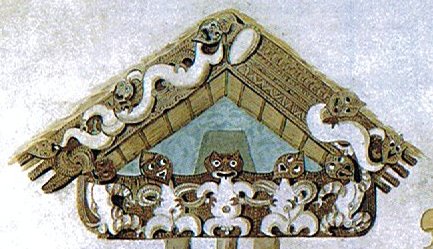|
TRANSLATIONS
Next page:
The leaner honu in the afternoon (of what is day 290 if we count with 2 glyphs per day), should though not represent the 'afternoon' of the year but rather the spring when food has been scarce for a long time. Maybe honu in Pa11-14 represents a newborn honu. The taranaki 'snake' is fat towards the end of the year (right). The page 'without having added 64 days':
Time runs clockwise in the roof. There are 4 'fingers' at right but only 3 at left. To the left of the central 'cat' is his spring wife, who by her open crotch illustrates the birth of a new year. To the right of the cat is his winter maid, who by her leg posture illustrates the opposite, darkness still rules. |
|||||||||||||||||||||||||||||||||||||||||||||||||||||||||||||||||||||||||||||||||||||||||||||||||||||||||||||||||||||||||||||||||||||||||||||||||||||||||||||||||||||||||||||||||||||||||||||||||||||||||||||||||||||||||||||||||||||||||||||||||||||||||||||||||||||||||||||||||||||||||































